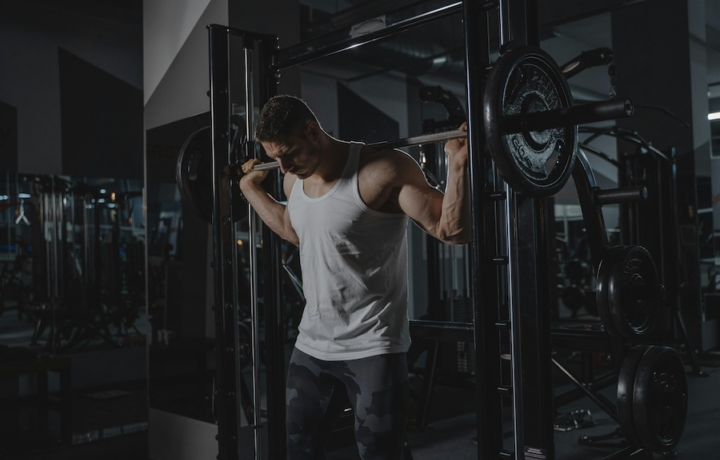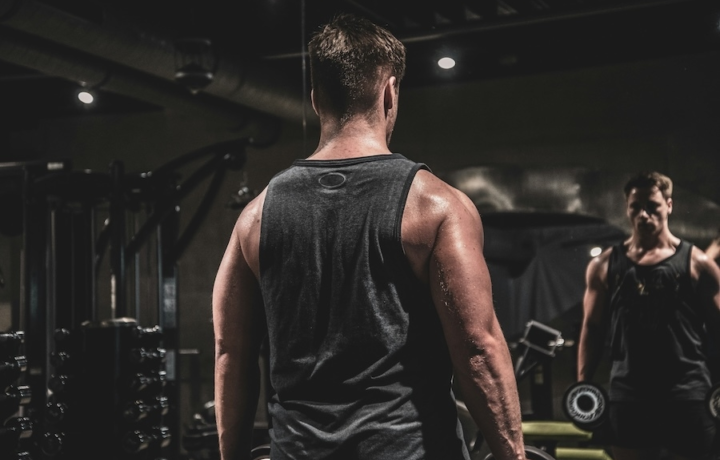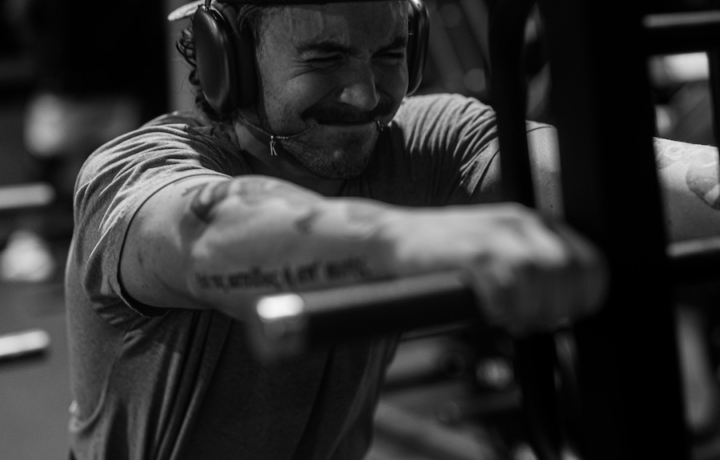Exercise
Lever Seated Reverse Fly

Lever Seated Reverse Fly
How to Perform
- Adjust the machine seat height so that the handles align with your mid-chest and your feet are flat on the floor.
- Sit on the machine with your chest against the pad and grasp the handles with a neutral grip, palms facing each other.
- Maintain a slight bend in your elbows and pull your shoulder blades down and back to establish a strong starting position.
- Take a deep breath in and brace your core to stabilize your torso against the pad.
- Exhale as you pull the handles backward and to the sides by squeezing your shoulder blades together, keeping your wrists neutral throughout the movement.
- At the end range of motion, your arms should be nearly parallel to the floor with elbows slightly bent, not locked.
- Hold the contracted position for a brief moment, focusing on the tension across your upper back and rear deltoids.
- Inhale as you slowly return to the starting position with controlled movement, maintaining tension in your upper back.
Important information
- Keep your chest firmly pressed against the pad throughout the entire exercise to isolate the rear deltoids and prevent using momentum.
- Avoid shrugging your shoulders during the movement; focus on keeping them down and away from your ears.
- Adjust the resistance to allow for proper form—too heavy a weight will cause you to use your trapezius muscles instead of targeting the rear deltoids.
- If you feel stress in your neck or lower back, reduce the weight and reassess your positioning on the machine.

Lever Seated Reverse Fly
Exercise Details
Primary Muscles
Muscle Groups
Mechanic
Risk Areas
Built for progress
Take the guesswork out of training
Create personalized AI-powered workout plans that evolve with you. Train smarter, track every rep and keep moving forward, one workout at a time.






The Lever Seated Reverse Fly stands as a cornerstone exercise for those looking to develop impressive posterior shoulder definition and upper back strength. This intermediate-level movement specifically targets the rear deltoids and trapezius muscles, making it invaluable for bodybuilders seeking that complete, three-dimensional shoulder development that creates an impressive silhouette on stage.
While many fitness enthusiasts focus primarily on the front and side deltoids through pressing movements, the rear delts often remain underdeveloped. This muscular imbalance not only detracts from aesthetics but can potentially lead to postural issues and shoulder problems down the road. The beauty of the Lever Seated Reverse Fly lies in its ability to isolate these posterior muscles with remarkable precision, allowing for concentrated tension exactly where it's needed most.
From a strength perspective, developing the rear deltoids and traps contributes significantly to overall upper body power. These muscles play crucial supporting roles in compound movements like deadlifts, rows, and even bench pressing by providing stability throughout the shoulder girdle. Regular implementation of the Lever Seated Reverse Fly can address weaknesses in these areas, potentially improving performance across your entire training regimen.
For bodybuilders specifically, the exercise delivers that coveted "3D pop" to the shoulders when viewed from any angle. The machine-based nature of this movement allows for consistent resistance throughout the range of motion, creating optimal tension for hypertrophy. Many find they can achieve superior mind-muscle connection compared to free-weight alternatives, making each rep more productive for tissue growth.
The Lever Seated Reverse Fly represents the perfect balance between isolation and functionality. While primarily a bodybuilding staple, its benefits extend far beyond aesthetics into improved posture, injury prevention, and enhanced performance in other lifts. Whether you're preparing for competition or simply building a more balanced physique, this exercise deserves a permanent spot in your shoulder training arsenal.
FAQ - Lever Seated Reverse Fly
The Lever Seated Reverse Fly primarily targets the rear deltoids (posterior shoulder muscles) while also engaging the middle and lower trapezius, rhomboids, and rotator cuff muscles. This makes it an excellent exercise for complete posterior chain development and balanced shoulder aesthetics.
For optimal results, perform Lever Seated Reverse Flies 1-2 times per week as part of your shoulder or pull-day training. Most lifters respond well to 3-4 sets of 8-15 repetitions, adjusting the weight to ensure the last few reps of each set are challenging.
The most common mistakes include using excessive weight leading to momentum swinging, failing to fully retract the shoulder blades at peak contraction, and allowing the wrists to bend during the movement. Focus on controlled movement with a brief pause at full contraction for maximum muscle activation.
Increase difficulty by implementing slower eccentric (lowering) phases of 3-4 seconds, incorporating drop sets, or using rest-pause techniques. You can also try unilateral (one-arm) variations to address muscle imbalances and increase the mind-muscle connection.
When performed correctly, this exercise can actually benefit those with certain shoulder issues by strengthening the posterior shoulder muscles that often help improve posture and balance. However, start with light weight and consult a healthcare professional if you have existing injuries or chronic shoulder pain.









